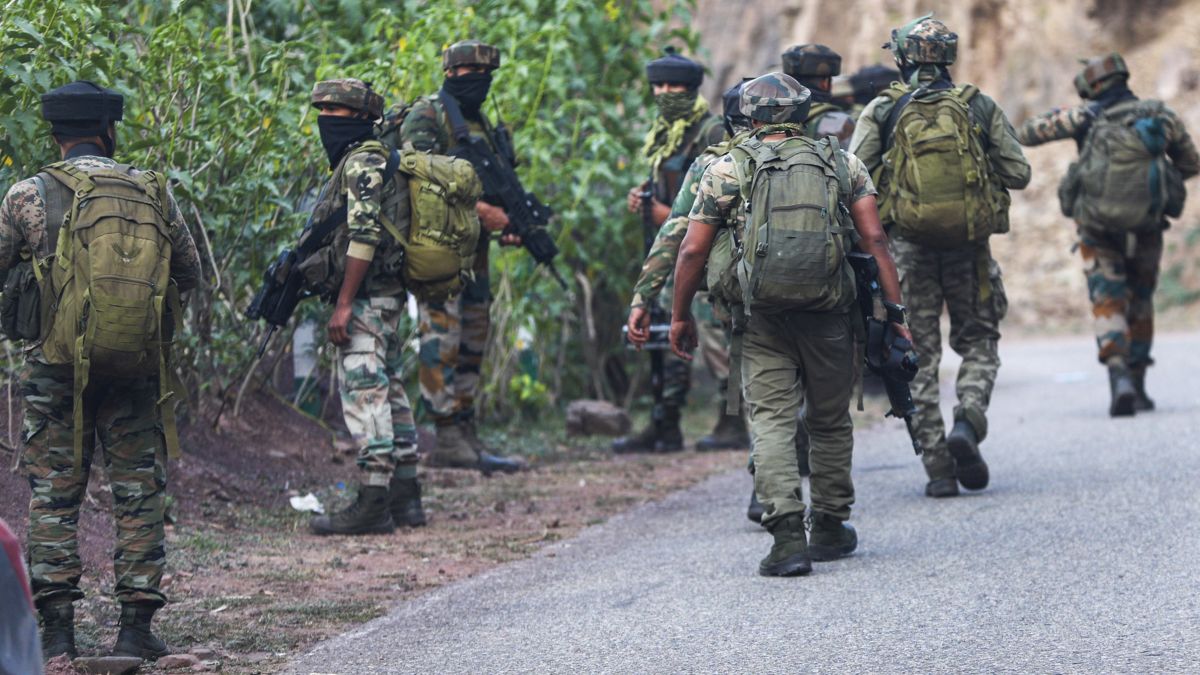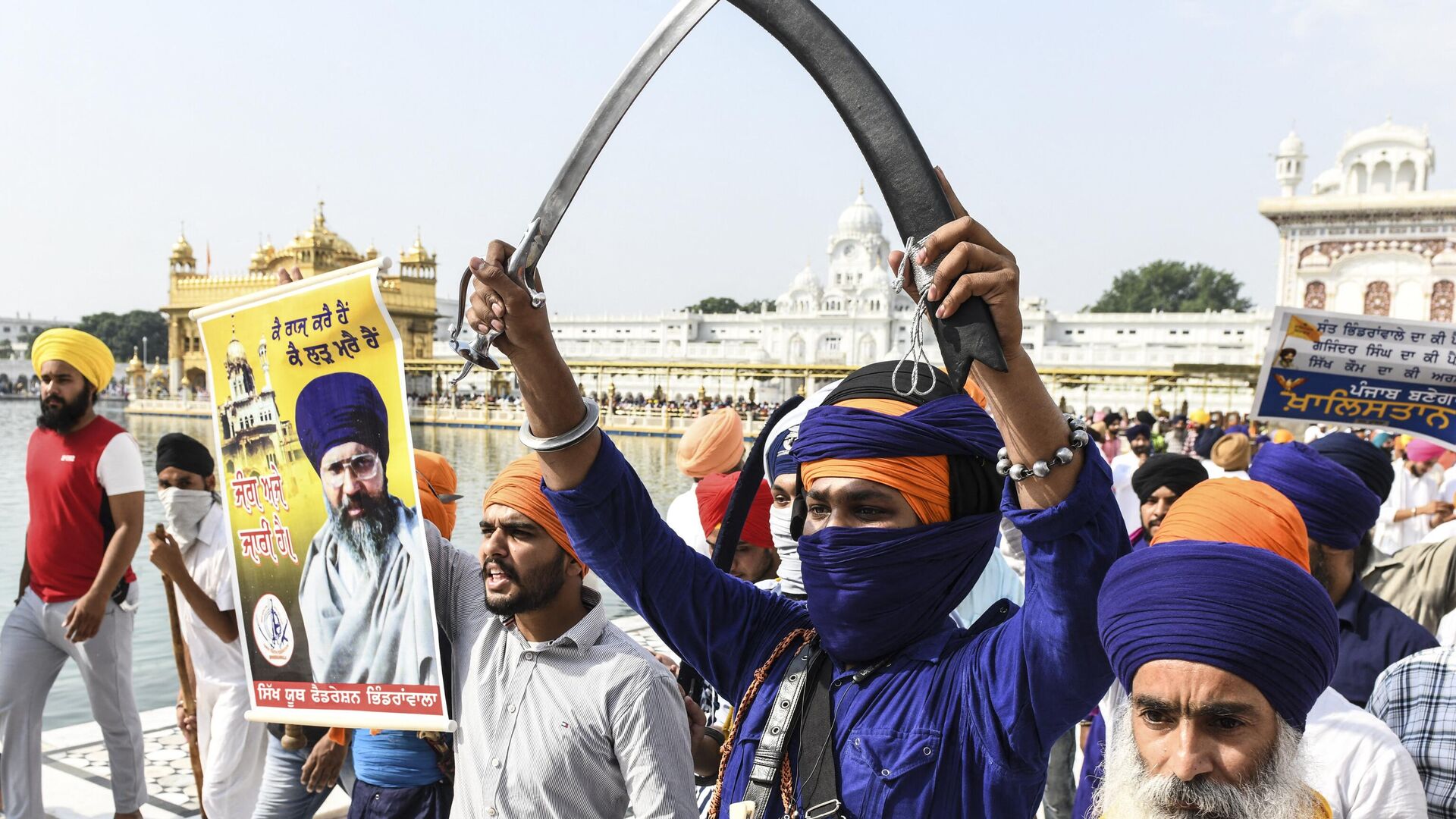India has long been no stranger to acts of terrorism, but certain decades in history remain more deeply etched in collective memory. The 1990s were particularly harrowing, with the insurgency in Jammu and Kashmir escalating into one of India’s most severe security crises. Two more years—2005 and 2008—also stand out for the devastating toll on human life, marked by the Delhi bombings and the infamous November 2008 Mumbai attacks that claimed hundreds of lives.
Today, even as India works tirelessly to combat terrorism, a new set of challenges seems to be rising in tandem—mysterious militant attacks in Jammu and Kashmir, an uptick in bomb threats targeting the aviation sector, and a blast reported in Delhi, all within a matter of days.
)
Militant Attack in Ganderbal, Kashmir
In the latest bout of violence, a militant attack on a construction site in Ganderbal, central Kashmir, resulted in the tragic deaths of seven civilians on October 20, 2024. The victims included a local doctor and six non-local workers.
According to official sources, unidentified gunmen appeared near the camp site of a private company in the Gagangeer area and opened indiscriminate fire. The attack took place near the construction site of the Z-Morh tunnel, a strategic infrastructure project close to the popular tourist destination of Sonamarg.
Security forces quickly cordoned off the area, but as of now, the identity of the attackers remains unknown. Initial reports suggest that an INSAS automatic rifle was used, but the number of attackers is still uncertain.
Senior police officials, including Inspector General of Police V.K. Birdi, were dispatched to investigate the matter. This attack came just two days after another non-local worker was killed in Shopian, in south Kashmir, raising concerns about a coordinated escalation in violence against non-locals in the region.
The attack has drawn widespread condemnation from across Jammu and Kashmir. Union Home Minister Amit Shah, speaking via social media, assured the public that those responsible “will not be spared” and promised the harshest response from security forces. Yet, for the families of the victims, this cycle of violence continues to take a devastating toll.
Hoax Bomb Threats Plague Indian Aviation
India’s aviation industry has been struck by a wave of bomb threats, leading to widespread panic and severe disruption. Over the past week, more than 70 domestic and international flights have been targeted by hoax bomb threats. Although these threats have turned out to be false alarms, they have forced airlines and authorities to enact emergency measures, causing significant inconvenience for passengers and costing the industry millions.
Among the airlines hit hardest are Air India Express, Air India, Vistara, IndiGo, and Akasa Air. Air India Express, in particular, saw seven of its flights targeted, while an Air India flight from Mumbai to London had to be escorted by a Royal Air Force fighter jet to Heathrow Airport after a bomb threat was reported—a threat later confirmed to be a hoax.
Vistara, another major player in the Indian aviation sector, faced similar disruptions, with six of its flights receiving bomb threats. Five of these were international routes, adding to the already challenging task of ensuring passenger safety. IndiGo, India’s largest airline by market share, reported bomb threats to five of its flights, including two international services to Istanbul. Akasa Air also had five of its flights targeted.

The Cost of Fear
The financial impact of these hoax bomb threats is staggering. According to a report by The Times of India, the total cost associated with these threats—including fuel dumping, unscheduled landings, accommodation for passengers, grounding of aircraft, and crew replacements—is expected to exceed ₹3 crore ($360,000). Beyond the monetary costs, these incidents erode public confidence in air travel, which has already been heavily affected by post-pandemic concerns.
In response, the Indian government is preparing to introduce stricter measures to deter such threats. Civil Aviation Minister K. Rammohan Naidu has indicated that the government is considering amending regulations to impose harsher penalties, including placing perpetrators on no-fly lists. Currently, Indian aviation regulations do not have specific provisions for handling bomb threats originating from external sources like social media, a loophole that the government seeks to address urgently.
Delhi Blast. Investigators Probe Khalistan Links as Pakistan-Based Telegram Channels Surface
Meanwhile, the investigation into the blast that occurred in Delhi’s Prashant Vihar area on Sunday, October 20, has taken a new turn, with reports linking the explosion to Khalistani operatives. Central agencies, in coordination with local authorities, have uncovered low-explosive materials at the blast site, raising concerns about the nature and intention behind the attack.
Investigators found traces of a white powdery substance believed to be part of a homemade bomb, likely made with ammonium phosphate and other chemicals. The forensic analysis is still underway to determine the exact composition of the explosive materials. Alongside this, wires and a battery were discovered near the scene, although it remains unclear whether they were directly connected to the blast. Officials are working to piece together how these materials were used.

Pakistan-Based Telegram Channels Claim Khalistan Involvement
As investigators seek deeper, Pakistani Telegram channels have emerged as a significant factor in the case. One such channel, named “Justice League India,” shared CCTV footage allegedly from the Prashant Vihar blast site, claiming that Khalistani operatives were behind the attack. This narrative quickly spread across various Pakistan-based Telegram channels, many of which have previously shared updates from The Resistance Front (TRF), a group known for its activities in Kashmir.
The message circulated on these channels asserted that Khalistan-linked groups have the capacity to strike in India at any time, further stoking fears of renewed militancy fueled by external actors. Experts are now examining whether Pakistan’s intelligence agency, ISI, might be playing a role in promoting the Khalistan narrative as part of a broader effort to incite unrest in India.
Meanwhile, the Delhi Police are investigating whether the blast was a deliberate act of terrorism or an attempt to send a message. Initial assessments suggest that the perpetrators may have intentionally timed the explosion for the early morning hours and targeted a school wall to avoid causing casualties. “The manner of the blast, its timing, and the location indicate that the intent may have been symbolic rather than destructive,” a police source commented.
Despite the claims circulating on social media and encrypted messaging platforms, authorities are cautious about drawing conclusions. The veracity of the Khalistan links remains unproven, and only a thorough investigation will determine whether these claims hold any truth.
As the investigation continues, authorities are scrutinizing the spread of information through Pakistani Telegram channels. Any involvement of foreign intelligence services, such as the ISI, would mark a troubling escalation in the use of militant narratives to incite violence in India.
While central agencies are yet to officially confirm the motive behind the blast, it is clear that the Prashant Vihar incident has opened up a broader investigation into how external elements may be influencing militant activities in India.
Thus, the most important question – Is Terrorism Raising Its Ugly Head Again?
Terrorism, a longstanding challenge for India, seems to be rearing its head once more, not just within its borders but also in the context of international relations. From the insurgency in Kashmir to the re-emergence of the Khalistan movement, the question of whether terrorism is becoming a dominant force again is a pressing one.
Adding fuel to the fire is the growing diplomatic standoff between India and Canada over allegations of Khalistani activities on Canadian soil, which has brought this issue back into global focus.
A Look Back – India’s History with Terrorism
India has long been a target of terrorism, especially during the 1990s when the insurgency in Jammu and Kashmir reached a fever pitch. Militant groups backed by Pakistan operated with impunity, causing devastation that claimed thousands of lives.
Other tragic incidents followed, including the 2005 Delhi bombings that killed more than 60 people and the deadly 2008 Mumbai attacks, which resulted in hundreds of casualties over a span of three days. These attacks were vivid reminders of how terrorism had taken deep roots in India’s socio-political arena, particularly driven by external forces.
Fast forward to 2024, and terrorism seems to be staging a comeback. Militant activity in Jammu and Kashmir has surged, meanwhile, India’s aviation industry is grappling with a wave of bomb threats, and a low-intensity blast in Delhi’s Prashant Vihar has brought the issue of terrorism back into the spotlight.
The blast has been linked to Khalistani operatives by Pakistan-based Telegram channels, raising fresh concerns about the involvement of external actors in reviving old insurgencies.

The Khalistan Problem. A Growing Concern
The revival of the Khalistan movement, which seeks to establish an independent Sikh state, is perhaps the most worrying development. The movement, which peaked in the 1980s and early 1990s, was largely suppressed by the mid-1990s. However, recent events suggest that the movement is regaining momentum, fueled by online propaganda and support from foreign sympathizers.
A key factor in the resurgence of Khalistan is the diplomatic standoff between India and Canada. Relations between the two countries have soured in recent months, following accusations by India that Canada has become a hub for pro-Khalistani activists. This tension escalated after Canadian Prime Minister Justin Trudeau publicly accused India of involvement in the killing of Hardeep Singh Nijjar, a prominent Khalistani separatist leader, on Canadian soil.
Trudeau’s claims have been met with fierce denial from New Delhi, which has accused Canada of turning a blind eye to Khalistani extremism. The diplomatic row has seen both countries expel diplomats and led to a freeze in negotiations over trade and cooperation. The Khalistan issue has now become a flashpoint in India-Canada relations, with the latter accused of harboring and tolerating extremist elements that threaten India’s national security.
The Role of Canada and the Diplomatic Standoff
Canada’s Sikh diaspora has played a pivotal role in the revival of the Khalistan movement. While the vast majority of Canadian Sikhs oppose extremism, a small but vocal segment of the community continues to advocate for Khalistan. This faction, concentrated in parts of British Columbia and Ontario, has been accused of using Canada as a safe haven to propagate the separatist agenda.
The Indian government has expressed its frustration with what it sees as Canada’s lax approach to Khalistani elements. Over the years, several pro-Khalistan rallies have been held in Canadian cities, with participants openly calling for the creation of an independent Sikh state. Indian officials have long argued that Canada’s leniency toward such activities undermines the bilateral relationship and poses a direct threat to India’s sovereignty.
The situation reached a boiling point with the Nijjar assassination. Trudeau’s decision to publicly accuse India of involvement without presenting substantial evidence has drawn sharp criticism. India, in turn, has demanded that Canada rein in Khalistani extremists on its soil and has pointed out that Nijjar was wanted in India on terrorism charges. The resulting diplomatic impasse has made it clear that the Khalistan issue is not just an internal matter for India, but a growing international problem.
External Forces at Play – Pakistan’s Involvement
Adding complexity to the situation is the role of Pakistan in the renewed Khalistan movement. Over the years, Pakistan’s intelligence agency, ISI, has been accused of supporting Khalistani separatists as part of a broader strategy to destabilize India. Recent claims by Pakistani-based Telegram channels linking the Khalistan movement to the Delhi blast reinforce the belief that external actors are once again trying to revive the insurgency.
The use of social media platforms like Telegram has made it easier for separatist groups to spread propaganda and recruit new supporters. The rapid dissemination of Khalistani content on these platforms suggests a coordinated effort to reignite the movement. This points to a sophisticated, cross-border strategy that leverages both old grievances and modern technology to further terrorist aims.
Tackling the Threat
India’s current security situation, compounded by the international dimension of the Khalistan problem, poses significant challenges. The resurgence of militancy in Kashmir, combined with the revival of separatist movements like Khalistan, requires a multifaceted response. While India has the military and intelligence capabilities to handle internal threats, tackling the external dimension—particularly the role of Canada and Pakistan—will require diplomatic finesse and international cooperation.
India must also strengthen its counter-terrorism strategies to deal with the increasing use of social media and encrypted messaging apps in terrorist operations. Preventing the spread of extremist ideologies online will be key to curbing the revival of movements like Khalistan.
Moreover, resolving the diplomatic standoff with Canada is crucial. Canada must address India’s concerns about Khalistani extremism if it wishes to restore trust in the relationship. International pressure and cooperation are vital in ensuring that countries like Canada do not become breeding grounds for separatist movements that have far-reaching consequences.
Snapshot
While terrorism never fully disappeared from India, recent developments indicate that it may be returning with a vengeance. The rise of Khalistan, the ongoing insurgency in Kashmir, and the diplomatic tensions with Canada suggest that terrorism is once again becoming a central issue in India’s domestic and international affairs.









